Undergraduate
Ocean Tracks-College Edition Learning Modules
If you need to access a previous version of the learning modules, or have any other questions, please email the Ocean Tracks team.
Fact of Artifact?: Interpreting Patterns in Ocean Tracks Data
The tracking data in Ocean Tracks have been a powerful tool for scientists, revealing animal behaviors never before understood. You’ll use these data to develop your own new insights about these animals, but beware—to extract meaningful patterns and separate facts from artifacts, you need to take a critical look at the data. You should assess the quality and accuracy of measurements, understand how the data are collected and represented in the Ocean Tracks interface, and apply background information about tagging technologies and animal behaviors.
PDF | PPT
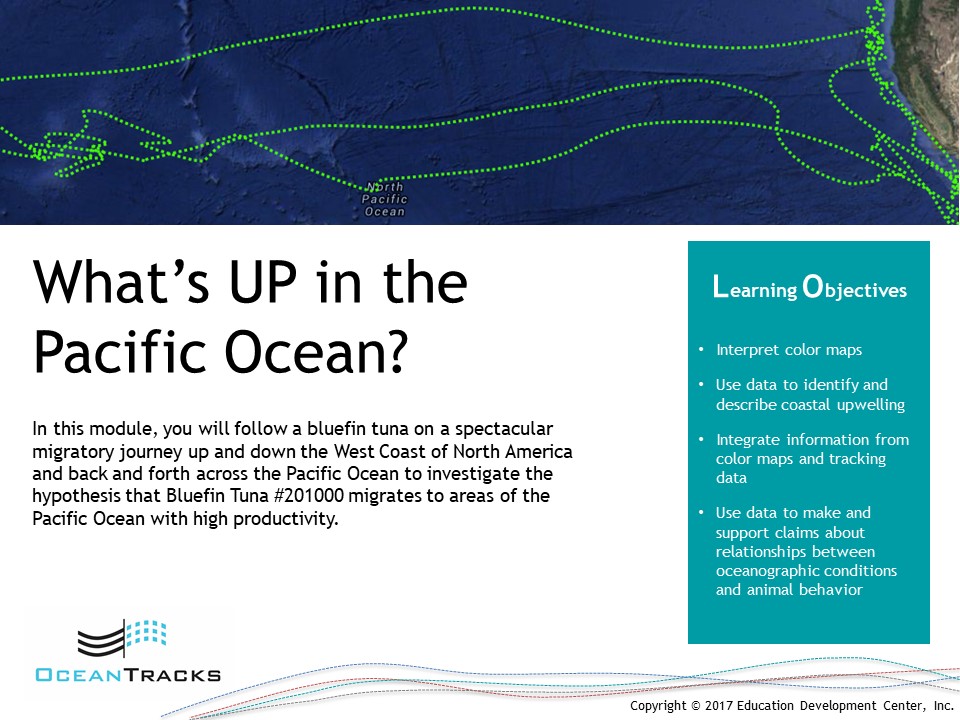 What's Up in the Pacific Ocean?: Connecting Productivity and Tuna Migration
What's Up in the Pacific Ocean?: Connecting Productivity and Tuna Migration
In this module, you will follow a bluefin tuna on a spectacular migratory journey up and down the West Coast of North America and back and forth across the Pacific Ocean to investigate the hypothesis that Bluefin Tuna #201000 migrates to areas of the Pacific Ocean with high productivity.
PDF | PPT
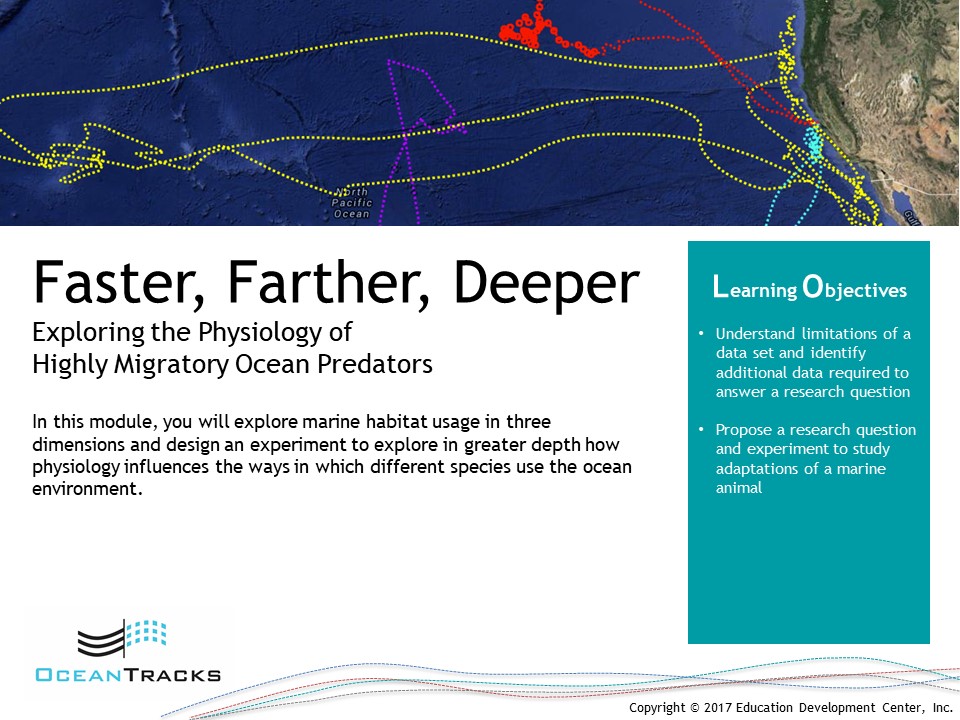 Faster, Farther, Deeper: Exploring the Physiology of Highly Migratory Ocean Predators
Faster, Farther, Deeper: Exploring the Physiology of Highly Migratory Ocean Predators
In this module, you will explore marine habitat usage in three dimensions and design an experiment to explore in greater depth how physiology influences the ways in which different species use the ocean environment.
PDF | PPT
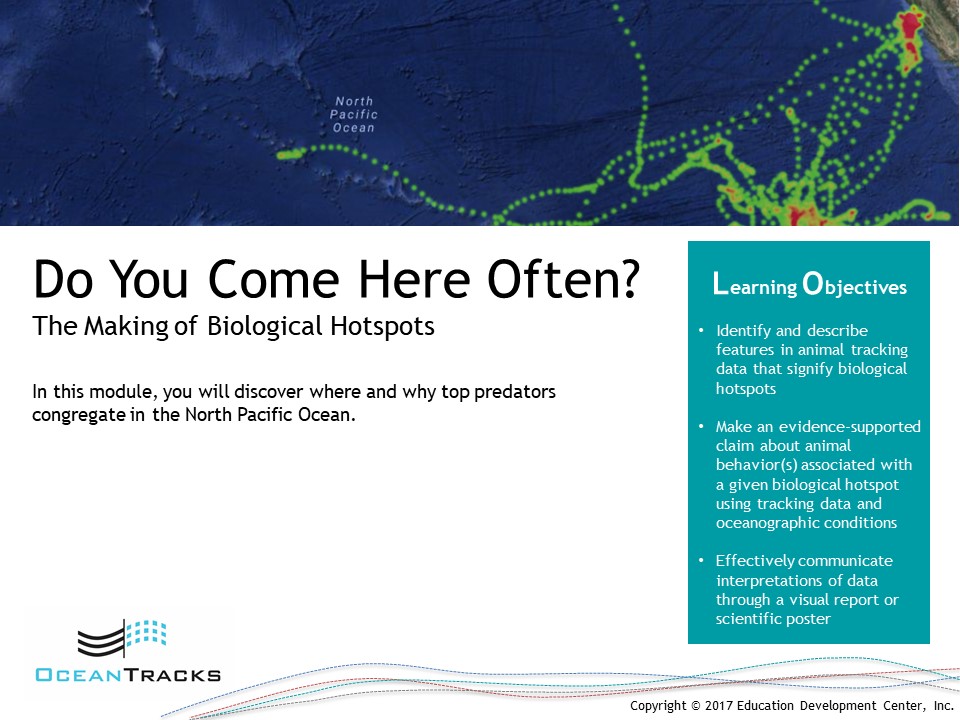 Do You Come Here Often?: The Making of Biological Hotspots
Do You Come Here Often?: The Making of Biological Hotspots
In this module, you will discover where and why top predators congregate in the North Pacific Ocean.
PDF | PPT
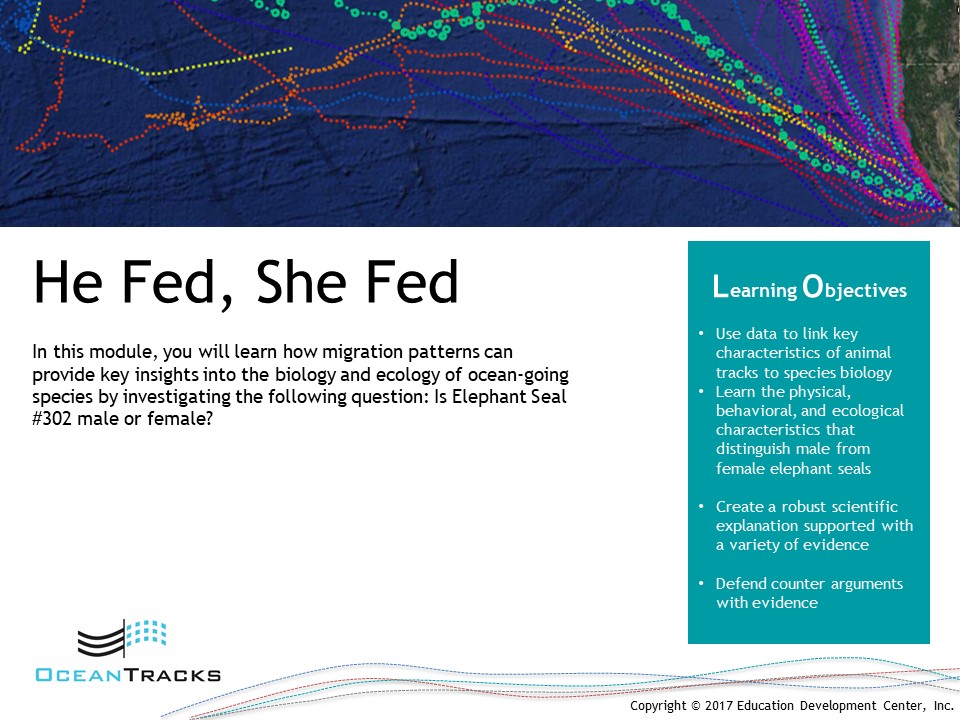 He Fed, She Fed
He Fed, She Fed
In this module, you will learn how migration patterns can provide key insights into the biology and ecology of ocean-going species by investigating the following question: Is Elephant Seal #302 male or female?
PDF | PPT
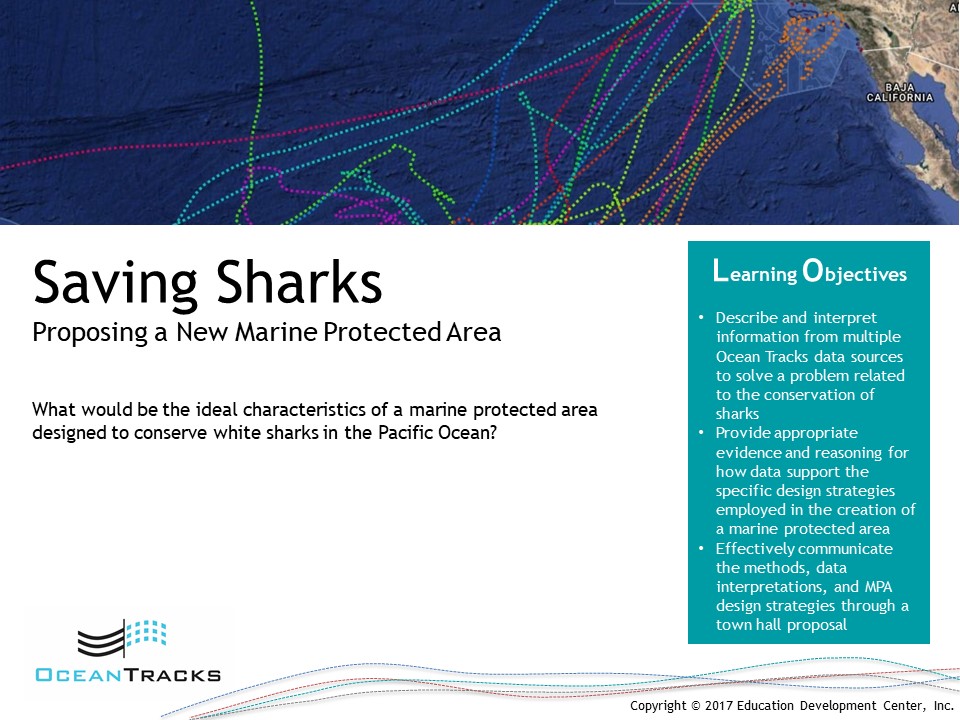 Saving Sharks: Proposing a New Marine Protected Area
Saving Sharks: Proposing a New Marine Protected Area
What would be the ideal characteristics of a marine protected area designed to conserve white sharks in the Pacific Ocean?
PDF | PPT
